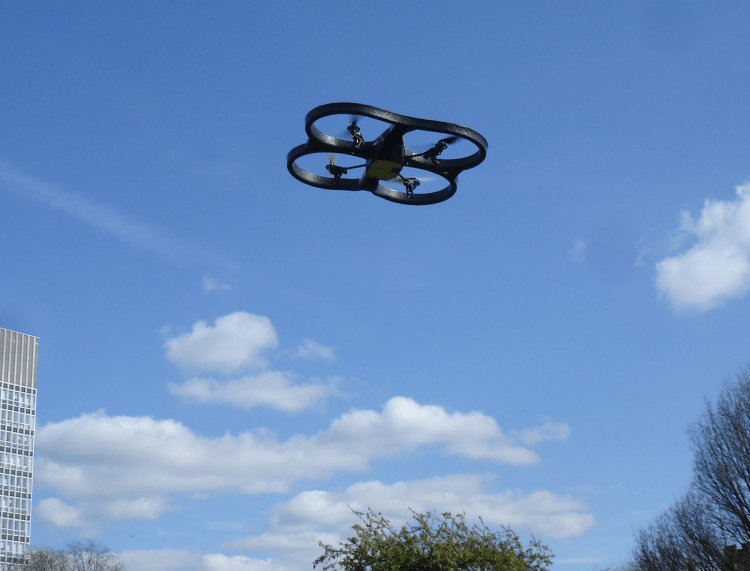Dumb drones are already old hat.
Researchers at the University of Sheffield in the UK are now developing mini-helicopters that are not only smart enough to learn how to get around entirely themselves, but they also know polite behavior.
Intelligent flying machines have been busy in Hollywood and in labs. They’ve appeared in such scifi movies as Minority Report, and the Sheffield researchers are part of a growing field that is busily making clever flying devices. Vijay Kumar’s research team at the University of Pennsylvania, for instance, uses Kinect-like infrared technology to sense motion from the environment for the autonomous flights of its drones.
Other research teams at Carnegie Mellon, the ETH Zurick engineering university in Switzerland, M.I.T., and elsewhere are similarly populating the air with self-reliant, artificial creatures.
These days, autonomy for machines is “not a luxury — it’s a necessity,” IDC analyst Al Hilwa told VentureBeat. “There’s been a revolution in location information, information from the cloud, sensors — and machines have to act on this [information] really fast.”
The Sheffield team is particularly focused on robots that “need to be able to make their own decisions,” but do so in cooperation with others.
Flying machines that can make their own decisions could be used in places where communication with remote human pilots might be difficult, such as in forest fires, in areas of high radiation or during battles. Or, for that matter, when an Amazon delivery drone has to make a quick decision to avoid an oncoming flock of birds.
Quadcopters used by the Sheffield researchers employ software that analyzes data coming from a forward-facing camera, as well as sensors for barometric and ultrasonic data. When in a new environment, they start with no knowledge and then have to build up a 3D map, from which they learn what they need to do. The software is designed around game theory concepts, and each robot has to successfully finish its task to “win.”
Their budding autonomy includes a skill that many humans have not yet mastered: cooperating with others. The governing software, for instance, has a protocol (demonstrated in the above video) where two meeting quadcopters do an Alphonse and Gaston routine until one decides to get on with it.
“The learning process the robots use here is similar to when two people meet in the street and need to get round each other,” Dr. Jonathan Aitken of Sheffield’s Department of Automatic Control and Systems Engineering said in statement. The polite quadcopters will go left and then right until they get in coordination and one is allowed to pass by flying higher.
Perhaps Google’s self-driving cars will similarly learn manners, so that we can dream of the day when Manhattan driving becomes civilized.
Whether civilized or not, machines that don’t need us as much anymore are as inevitable as children that grow up and move away.
“Expect to see a lot more autonomous machines,” Hilwa advised.
VentureBeat's mission is to be a digital town square for technical decision-makers to gain knowledge about transformative enterprise technology and transact. Learn More

